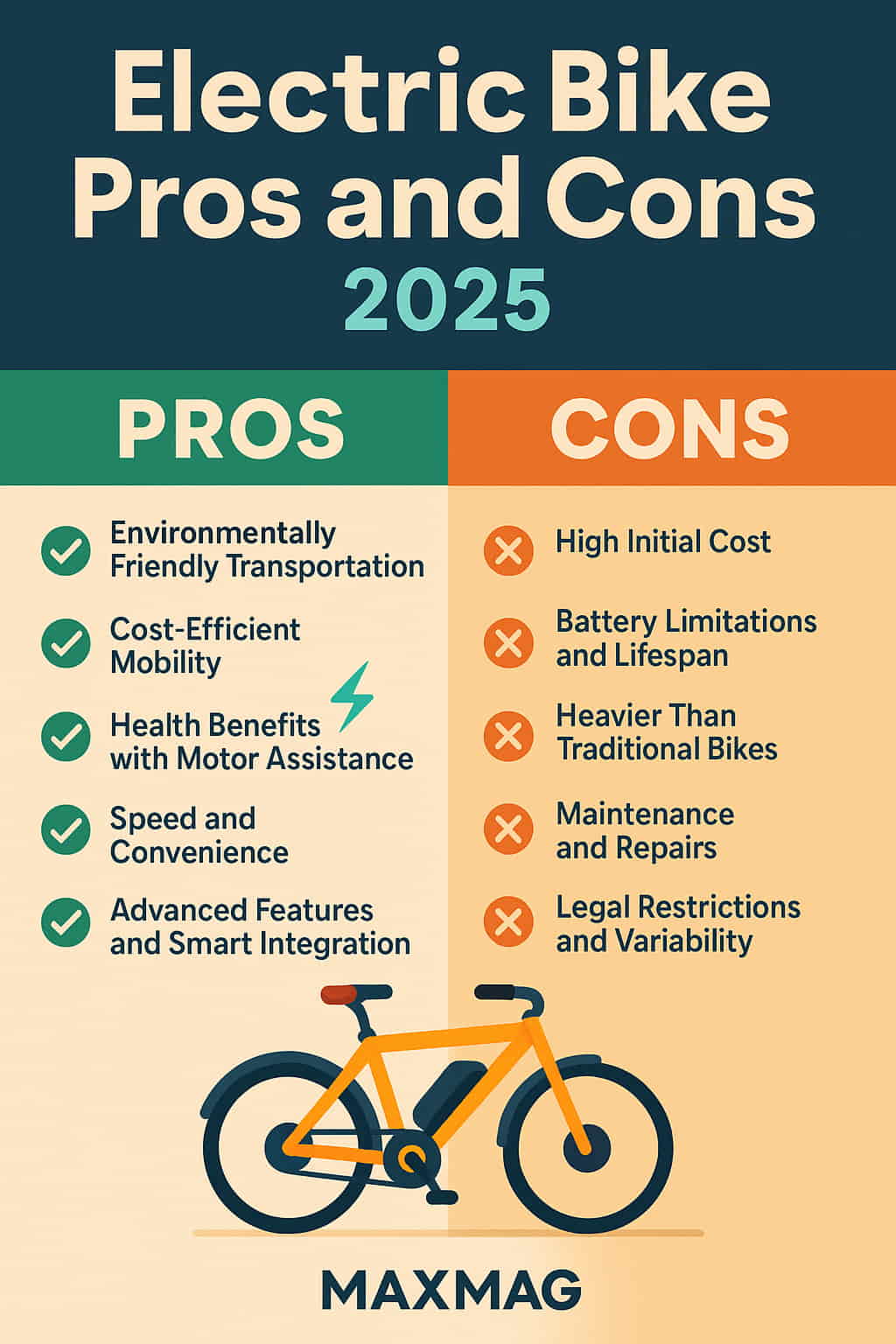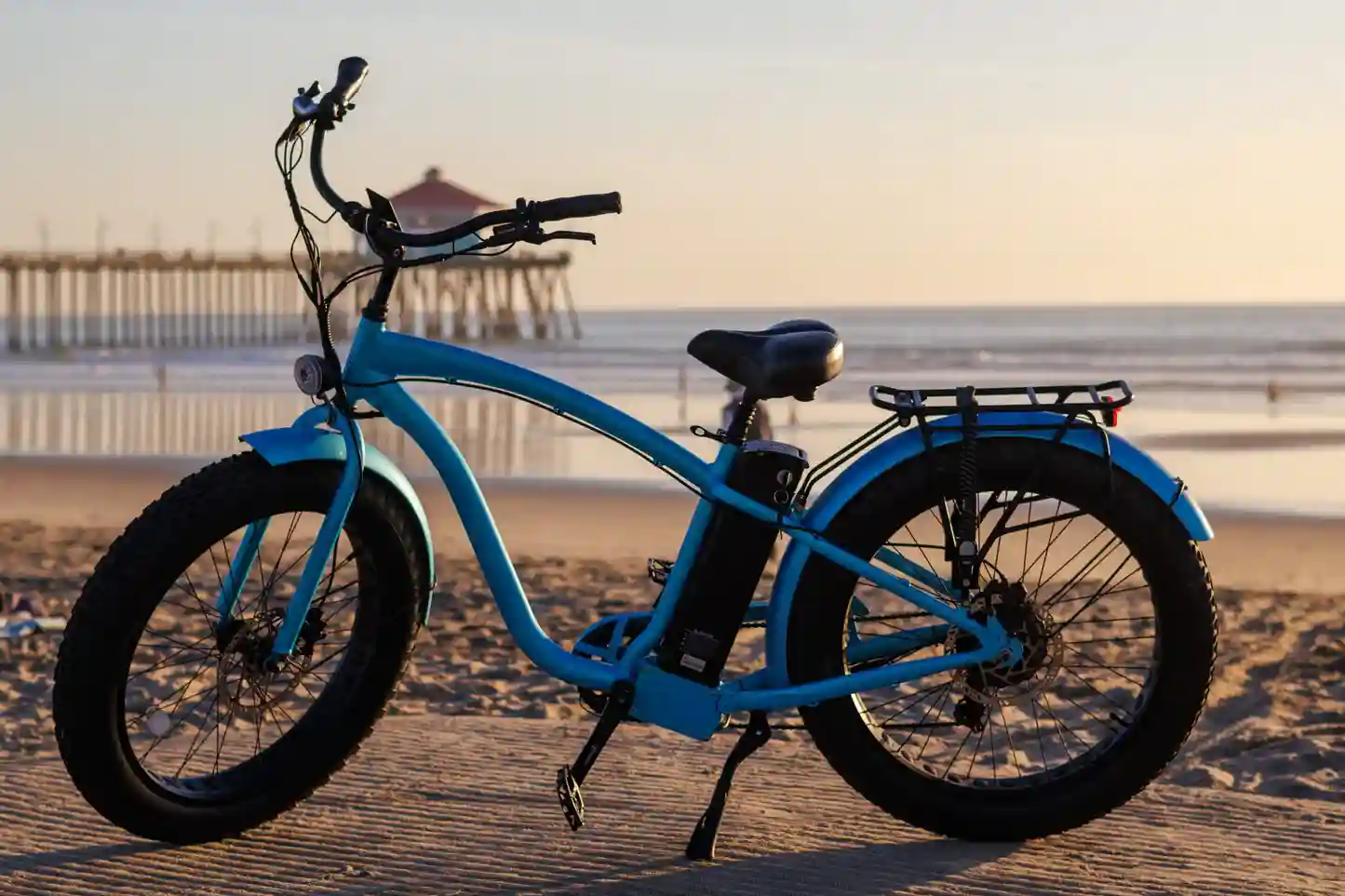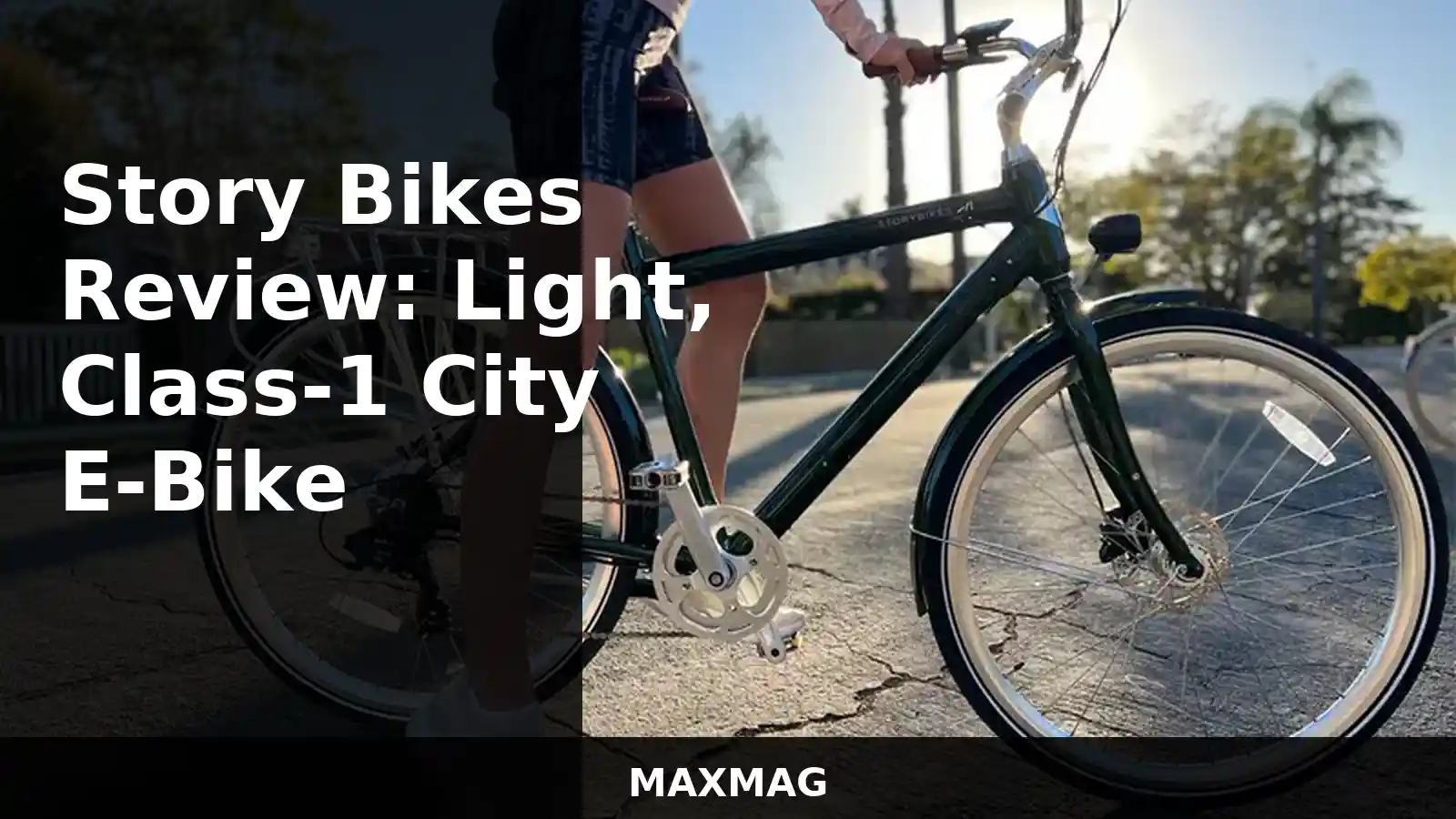Thinking about getting an electric bike this year? You’re not alone. E-bikes are everywhere in 2025—from city streets and college campuses to mountain trails and delivery apps. But before you make the investment, it’s worth taking a closer look at the electric bike pros and cons in 2025. Because like anything with a motor, battery, and price tag over $1,000, there’s more to it than just hopping on and cruising away.
In this article, we’ll break it all down in plain English—what’s great, what’s not so great, and what you should know before hitting that “buy now” button. Whether you’re curious about commuting, health benefits, or how long these things even last, you’ll find your answers here.
Why E-Bikes Are Having a Moment in 2025
Let’s face it: gas prices are unpredictable, traffic is a nightmare, and climate anxiety is real. That’s part of why electric bikes have taken off. They’re not just a trendy gadget anymore—they’re a legit way to get around.
Plus, with better batteries, smarter tech, and growing support from cities investing in bike lanes and incentives, 2025 is shaping up to be the year e-bikes go fully mainstream.
The Honest Electric Bike Pros and Cons in 2025
If you’re asking yourself, “Is it worth getting an electric bike this year?”, here’s the real scoop on what to love—and what to watch out for.
✅ THE PROS
1. You’re Helping the Planet (and Your Wallet)
Electric bikes don’t burn fuel, so you’re cutting your carbon footprint by a lot. They also cost almost nothing to run—just plug in, charge, and ride. A full charge? Maybe 10 to 15 cents. Compare that to a tank of gas.
Some states, like Colorado and California, are even offering rebates and tax credits on e-bike purchases. You can check Energy.gov to see if your state has one.
2. It’s Exercise—But Not the Suffer-Through-It Kind
You still have to pedal, but the motor gives you a boost when you need it. That means hills don’t suck, and long rides don’t leave you completely wiped. It’s especially great if you’re recovering from an injury, older, or just want to ease into being active again.
Many riders say they actually ride more with an e-bike because it’s just more fun—and that counts for something.
3. Fast, Easy, and Surprisingly Fun
Today’s e-bikes can go up to 28 mph depending on the model. That makes commuting or running errands feel less like a chore and more like freedom. You’ll blow past traffic, skip parking headaches, and actually enjoy the ride.
Plus, charging is easy—most have removable batteries you can bring inside and plug into a wall outlet.
4. They’re Getting Smarter
In 2025, e-bikes are more than just a motor and a frame. New models have features like:
-
GPS tracking
-
Anti-theft alarms
-
App integration
-
Regenerative braking
-
Auto-lock systems
Brands like VanMoof and Rad Power Bikes have really leaned into smart tech, which adds both convenience and peace of mind.
❌ THE CONS
1. They’re Not Cheap
Even an entry-level e-bike can run $1,000 or more. If you want a nicer battery, a mid-drive motor, or a big name brand, expect to spend closer to $2,000–$4,000. While they save money over time, the upfront cost is still a barrier for a lot of people.
2. Battery Life Isn’t Infinite
Most e-bike batteries get you 30 to 70 miles per charge, depending on terrain, rider weight, and assist level. Cold weather drains batteries faster, and over time, all lithium batteries degrade.
After 3–5 years, you might need a replacement battery, which could cost $400–$800.
3. They’re Heavy
Electric bikes are heavier than regular bikes—some weighing 50–70 lbs. That’s not fun if you need to carry it upstairs, lift it onto a rack, or push it home with a flat tire. It’s something to think about, especially if you live in an apartment or plan to travel with it.
4. More Maintenance Than a Regular Bike
With a motor, battery, and extra wiring, you’ll need to do more than just oil the chain. Brakes wear faster because of the added speed and weight. If something goes wrong electronically, not every bike shop will be able to fix it.
That said, more shops are training for e-bike service every year, and parts are getting easier to find.
5. Laws Are Still a Bit of a Mess
Not every city or state agrees on where e-bikes can go or how fast they should be. Some places restrict Class 3 e-bikes (28 mph) from bike paths. Others require helmets, lights, or even licenses. It’s not always consistent.
You can check with your local Department of Transportation or visit NHTSA.gov for updates.
E-Bikes vs. Everything Else: How Do They Stack Up?
Here’s a quick look at how e-bikes compare to other ways to get around in 2025:
| Method | Yearly Cost | Avg Speed | Emissions | Good For… |
|---|---|---|---|---|
| Car (gas) | $8,000+ | 45 mph | High | Long-distance, all weather |
| Public Transport | $1,200–1,800 | 20 mph | Low | Urban travel |
| Regular Bike | <$200 | 12 mph | None | Fitness, short trips |
| Electric Bike | $200–500 | 20–28 mph | Very low | Commutes, errands, fun |
E-bikes hit a sweet spot between affordability, speed, and environmental impact.
Who Should Definitely Consider an E-Bike?
Electric bikes aren’t for everyone, but if you fit into one of these groups, they might change your life:
-
Urban commuters who are tired of traffic and want to save money
-
Students looking for fast and cheap campus transport
-
People with joint issues or injuries who still want to stay active
-
Eco-conscious riders trying to ditch the car
-
Delivery drivers who want to maximize efficiency
Who Might Want to Hold Off?
-
If you live in a walk-up apartment with no charging access
-
If you need to go 100+ miles a day
-
If you aren’t comfortable doing basic maintenance or electronics checks
Also, if your area doesn’t have safe bike lanes or e-bike-friendly laws, it might be better to wait until infrastructure catches up.
xBest Electric Bikes Under $2,000 in 2025
If you’re just starting out, here are a few reliable models to look into:
-
Rad Power Bikes RadCity 5 Plus – Reliable commuter with a comfy ride
-
Lectric XP 3.0 – Affordable, folds up, surprisingly powerful
-
Aventon Level.2 – Great value with solid range and torque sensor
-
Ride1Up 700 Series – Good battery life, clean design
-
Velotric Discover 2 – Built for comfort and everyday riding
Need more info? Sites like Electric Bike Report and REI have excellent buyer guides and honest reviews.
Don’t Forget About E-Bike Insurance
Yup, it’s a thing now. And it might be worth it, especially in big cities. Companies like Velosurance and Spoke Insurance offer coverage for:
-
Theft
-
Battery failure
-
Crash damage
-
Liability
Expect to pay $100–$300/year depending on the bike’s value and your location.
Quick Tips Before You Buy
-
Test ride first. Most shops will let you try one out.
-
Measure your routes. Know how far you really ride each week.
-
Ask about maintenance. Can your local shop fix it if something breaks?
-
Think about storage. Can you charge it indoors or lock it up safely?
FAQ: Electric Bike Pros and Cons 2025
Q: Are electric bikes really worth the money?
A: If you commute or ride often, absolutely. They’re fast, fun, and way cheaper than a car in the long run.
Q: How far can they go on one charge?
A: Most e-bikes in 2025 can go 30–70 miles depending on the battery, terrain, and how much assist you use.
Q: Can I ride in the rain?
A: Light rain is fine—just avoid submerging the electronics. Fenders and lights are a good idea too.
Q: Do I need a license or registration?
A: Usually no for Class 1 and 2 e-bikes, but it depends on where you live. Always check local rules.
Q: What about theft?
A: Use a high-quality U-lock and consider a GPS tracker or insurance plan. E-bikes are popular targets.







